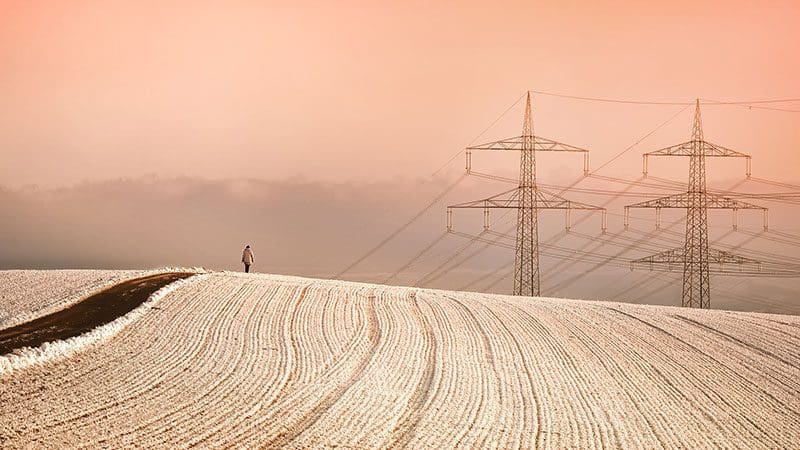Balancing Mechanism Costs Soar
Entirely in line with our predictions now for 8 years, balancing bosts continue to rise exponentially, now up to £967m for the last 3 months alone. They will continue to rise as renewable penetration rises, unless there is sufficient large-scale long-duration storage. And this is only one of the three main elements of system costs that will continue to rocket:
- Stability and constraint costs are soaring in parallel and will continue to do so until there is sufficient real inertial plant built (the stability costs are reported each week in the ESO Operational Transparency Forum – see the slides, between half-way and the end of each presentation), while
- Grid construction will be required to the tune of £1.25bn (and operation, maintenance and amortisation costs by £125m p.a.) for every gigawatt of renewable energy added, as per last May’s Network Options Analysis from National Grid – because it’s not being connected through suitably scaled inertial storage.
Consultations on Black Start
National Grid has issued two consultations on Black Start. As usual, they get lost in the woods, only seeing the trees and twigs. Many of the essential elements of the Black Start service are completely omitted, as is all consideration of how to incentivise the construction of new capacity where insufficient exists. Our two-page consultation response is here.
Storelectric Featured for Data CentresData Center Dynamics, an online magazine, has featured how Storelectric’s CAES enables data centres to be powered by renewable energy.
Review of the Year
This has been a momentous year for the energy transition and the system as a whole. Here are the highlights we picked out for you.
- We Brexited: an article looked at how it affects Storelectric, positively and negatively.
- National Grid recognised the effects of decreasing inertia and related services (e.g. voltage/frequency regulation, reactive power/load, phase-locked loops) on grid stability and operability, and our plants provide natural inertia 24/7 and so can solve such issues.
- We were featured in a French publication.
- The blog explained how we can save the grid many billions, both one-off and recurring annually, if renewables are connected through us to the grid.
- Blancing costs continue to rise, exceeding £100m in January.
- Spain targets 20GW storage by 2020, complementing their requirement for all new renewable generation to include storage.
- Mark Howitt was elected to the Energy Storage Steering Group of the Renewable Energy Association.
- We were featured in an article on Engie Brazil’s website.
- The blog showed a simple yet rigorous way to calculate the need for storage.
- Storelectric re-branded our technologies to:
- Green CAES, with its intrinsically zero emissions;
- Hydrogen CAES, dual-fuel hydrogen-compatible;
- Hydrogen Hybrid CAES, combining the features of both.
- The Renewable Energy Association put out its Long-Duration Energy Storage Report, with our input, which was well received and extensively discussed by BEIS and others.
- The blog analysed the causes of the extensive black-outs in Texas.
- We analysed National Grid’s Summer Outlook Report and its shortcomings.
- An article in Nature found that energy capacity costs must be below $1/kWh to displace all carbon generation, and storage cost and efficiency are the most imporant parameters; our costs are ~1/20th of that, and our costs are lowest and efficiencies are highest.
- IRENA (International Renewable Energy Association) reported that grid sizes will have to more than double – without knowing of Storelectric, who can greatly reduce that.
- Storelectric received more awards: GlobalBusiness Insight and Energy Tech Challengers.
- The blog compared different types of CAES.
- Mark spoke at both Middle East Energy’s Transmission and Distribution, and Back-up Power themes.
- We were recognised yet again, as Most Outstanding Renewable Energy Storage Solutions Provider – UK by the Global Business Insight Awards.
- The blog looked at how to incentivise clean energy, proposing an Emissions Added Tax.
- We outlined our funding strategy.
- We discussed some developing international opportunities.
- Mark was interviewed by TechRound.
- We looked at the UK Investment Bank.
- The blog explained how to compare different types of storage, like-for-like.
- National Grid published their Future Energy Scenarios 2021.
- Storelectric’s inputs to 6 governmental consultations were published.
- The blog looked at fads and fallacies of the energy transition, unafraid to be controversial.
- We published three more responses to consultations – all of which are excellent but have issues.
- We analysed the UK government’s, regulator’s and National Grid’s Smart Systems and Flexibility Plan, Early Competition Plan and Offshore Energy Networks proposal.
- We identifies ways in which the government and regulator can encourage and facilitate the deployment of large-scale and long-duration electricity storage.
- A blog article was created for each response to proposals.
- We were endorsed again, as “Impact initiative of the year: Europe” at the Environmental Finance Impact Awards.
- National Grid’s Future Energy Scenarios 2021 was analysed in depth.
- We also analysed the National Digitalisation strategy, having got past the poor grammar in its title, finding many major and critical omissions.
- Charles Rivers Associates invited Mark as a panelist in their event on “Markets and policies for future flexibility needs”.
- The blog reflected on what went wrong with elecricity regulation in the UK and, by extension, elsewhere as many other companies copied part of Britain’s deregulation strategy.
- The British government published its Net Zero Strategy, at long last, on which we commented.
- We also analysed National Grid’s Winter Outlook Report.
- Charles Rivers Associates did an entire podcast interviewing Mark on the challenges of the energy transition.
- The blog considered what should be the world’s priorities in hydrogen R&D.
- We analysed COP 26 as chalenging, but not challenging enough.
- We summarised what grids, governments and regulators need to do to decarbonise at minimum cost and disruption.
- Tallat spoke at the AI foundry about using AI in energy trading; he and Mark met Andy Burnham and Peter Mandelson there.
- The blog calculated the emissions benefits of Storelectric’s CAES, which are game-changing.
December
This month: see the articles above on:
- Soaring balancing, stability, constraint and grid costs;
- Consultations on Black Start.


